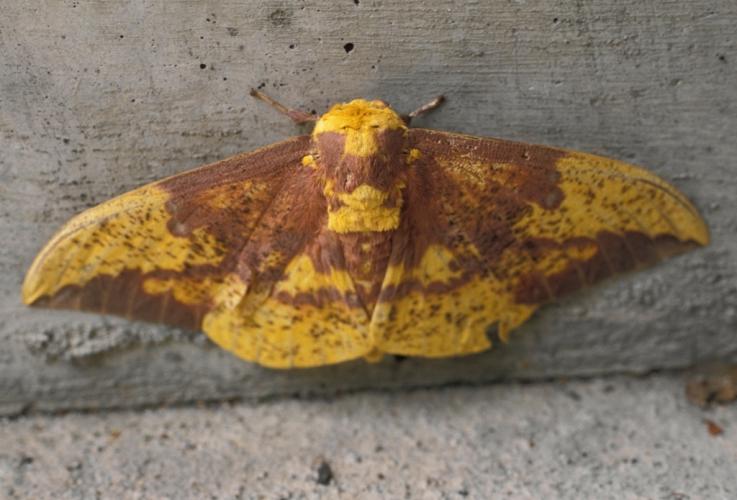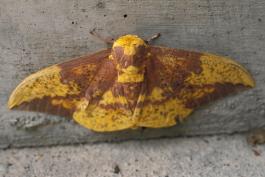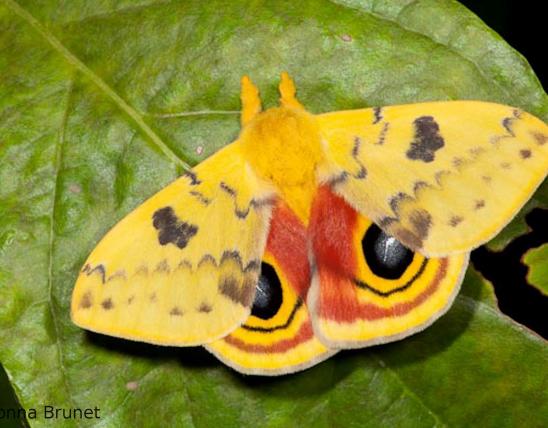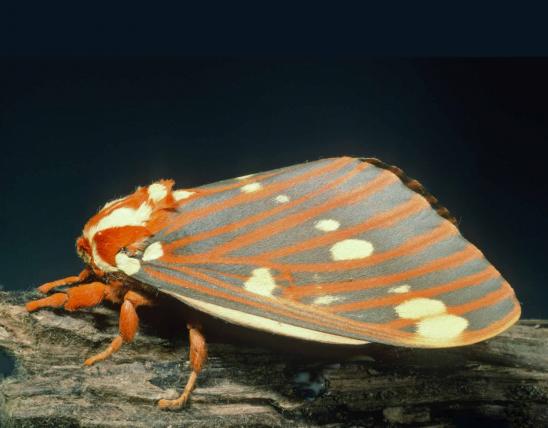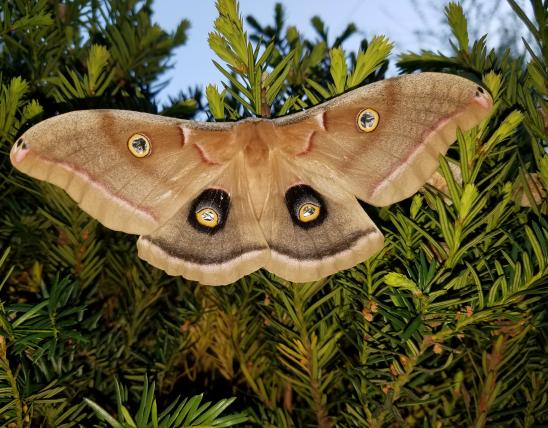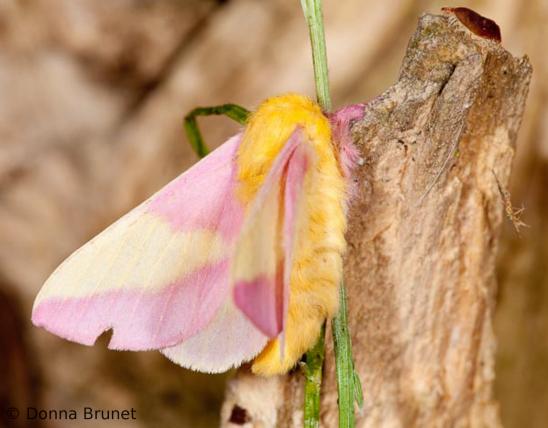
The beautiful imperial moth is impossible to confuse with any other species in Missouri: the wings are yellow with spots and speckles of pink, orange, or rusty pale purple.
Caterpillars can have either a green form (ranging from light to dark green) or a brown form (ranging from orange to dark brown to nearly black). There are 4 spiny horns in the front (a pair on thoracic segments 2 and 3) and a pair of shorter horns on the last few abdominal segments. The circular spiracles along the side are whitish with a dark outline. There is a sparse covering of long, whitish hairs on the back; shorter whitish hairs are on the sides.
Learn more about this and other giant silkworm and royal moths on their group page.
Common in the Ozarks and eastern Missouri; scattered elsewhere in the state.
Habitat and Conservation
Most often found in and near deciduous forests and wooded areas, where its caterpillar host trees live. Also commonly attracted to lights at night.
Food
In Missouri, imperial moth caterpillars most often eat the leaves of maples, sycamores, and sassafras, but they may eat a variety of trees and shrubs.
Like other members of the giant silkmoth family, the mouthparts of the adults are not functional, so they do not eat or live long in their winged form.
Status
Breeding resident.
Life Cycle
There are 2 broods in Missouri, with adult records from early May through August. Adults emerge from pupation early in the morning and mate the evening of the next day. Mating occurs usually between 11 p.m. and 1 a.m. Females have less brown on the wings above and are larger, with broader wings. They lay eggs in groups of 1–5 on the leaves of suitable host trees. Caterpillars hatch a few weeks later and begin to feed and grow. Caterpillars pupate in the ground and overwinter in that form.
Human Connections
Widespread in the eastern United States, this species has disappeared from almost all of New England, except for a population that persists on the island of Martha’s Vineyard, Massachusetts. Causes for the decline seem to be human-related and appear to be some combination of the following: fragmentation of suitable habitat, pesticides, insecticides, herbicides, street lamp light that disrupts their navigation and mating activities at night, and the well-intended but unfortunate introduction of nonnative parasitoid insects that were supposed to battle only the invasive gypsy moth.
People who enjoy butterflies and moths, and natural history writing, should check out the natural history books of Gene Stratton-Porter (1863–1924). An Indiana native, she was a pioneering moth and nature photographer, an author of popular conservation and nature-themed articles and books, a champion of wetland conservation, and even a silent film producer. In her book Moths of the Limberlost (1912), the chapter “The Yellow Emperor” is about her first encounter with this species.
Ecosystem Connections
Adult imperial moths, with their yellow base color and random pattern of rusty browns, look astonishingly similar to a dying yellow sassafras, maple, hickory, or tulip tree leaf. This camouflage helps them survive during their days or week of adult life.
